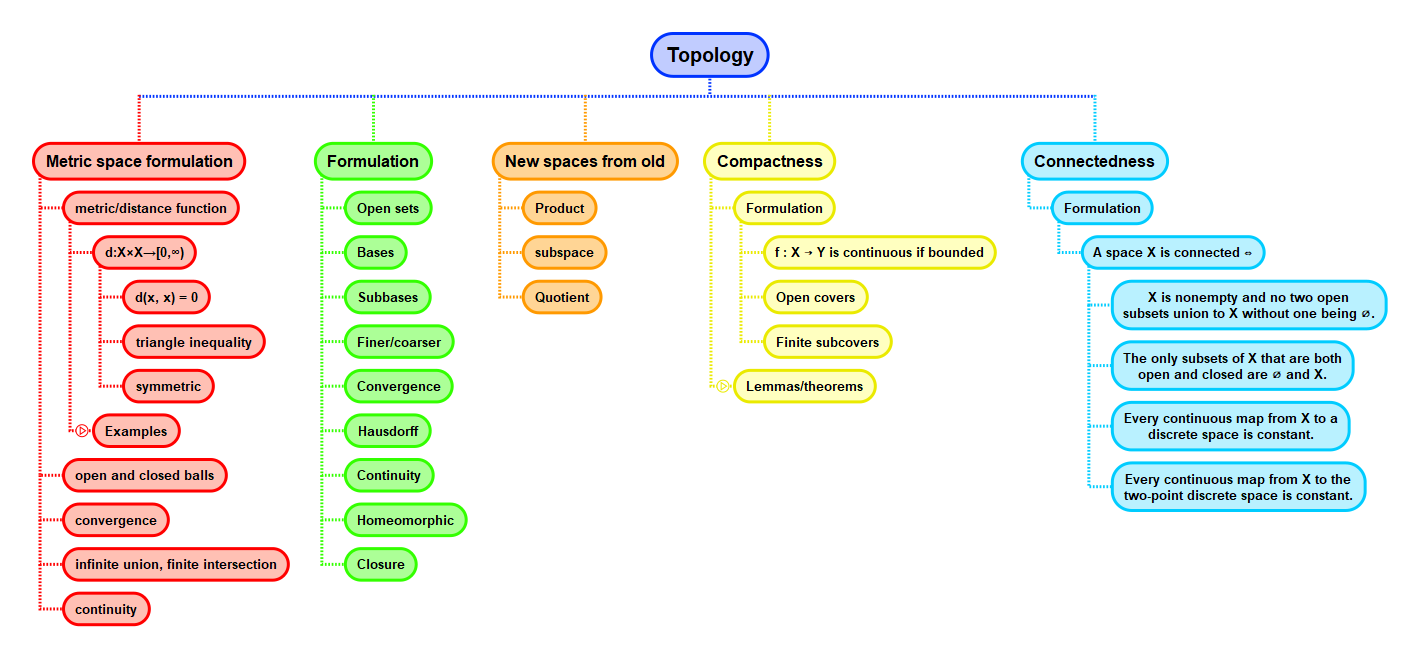Closed subsets
Closed subsets, definition
Let \( X = (X, \mathcal{T}) \) be a topological space. A subset \( V \subseteq X \) is closed iff \( X \setminus V \in \mathcal{T} \).
The below properties of closed sets can be derived.
Lemma. Finite unions and arbitrary intersections
Let \( X = (X, \mathcal{T}) \) be a topological space. Then
- Whenever \( V_1 \) and \( V_2 \) are closed subsets of \( X \), then \( V_1 \cup V_2 \) is also closed in X.
- Whenever \( (V_i)_{i\in I} \) is a family (finite or not) of closed subsets of \( X \), then \( \bigcap_{i \in I}V_i \) is closed in \( X \).
- \( \emptyset \) and \( X \) are closed subsets of \( X \).
This lemma follows from the application of de Morgan's laws to the definition of a topological space.
Sense of the word 'closed'
In several areas of mathematics 'closed' appears and describes some sense of an opperation on elements of a set not taking us out of thas set. For example, a vector space is 'closed' under addition and scalar multiplication. In analysis, the operation we are concerned about is the limit: a set is closed if all convergent sequences of elements of the set is another element of the set. A limit point of a set is a point that is the limit of some sequence of elements of the set. Only closed sets contain all of their own such limits.
Degrees of fundamentalness
Closed sets and the idea of closedness should be viewed as equally fundamental compared to open sets and openness. While closed sets are presented as a derivative concept when a topology is defined from open sets, the formulation could have proceeded the other way, with closed sets coming first. Kuratowski's closure axioms are an example of such a formulation.
This point is pertinent to other concepts in topology also: while it is elegant to formulate ideas of closedness, convergence, continuity, and so forth in terms of open sets, it is somewhat a distortion of the formulation process to deem one more fundamental than the other. The use of openness simply affords elegant constructions of the other concepts. There is an enlightening MathOverflow topic touching on this idea which has had mathematicians like Terrance Tao and Kevin Buzzard weigh in.
Example
Cantor set
The Cantor set is a closed subset of \( \mathbb{R} \); it acts as a reminded of the complexity or strangeness possible for closed sets.
Context

